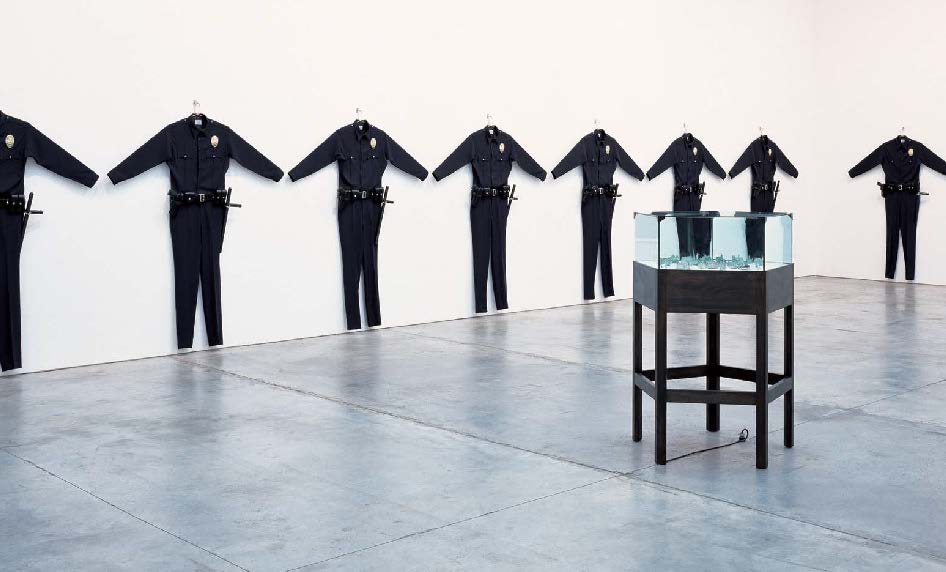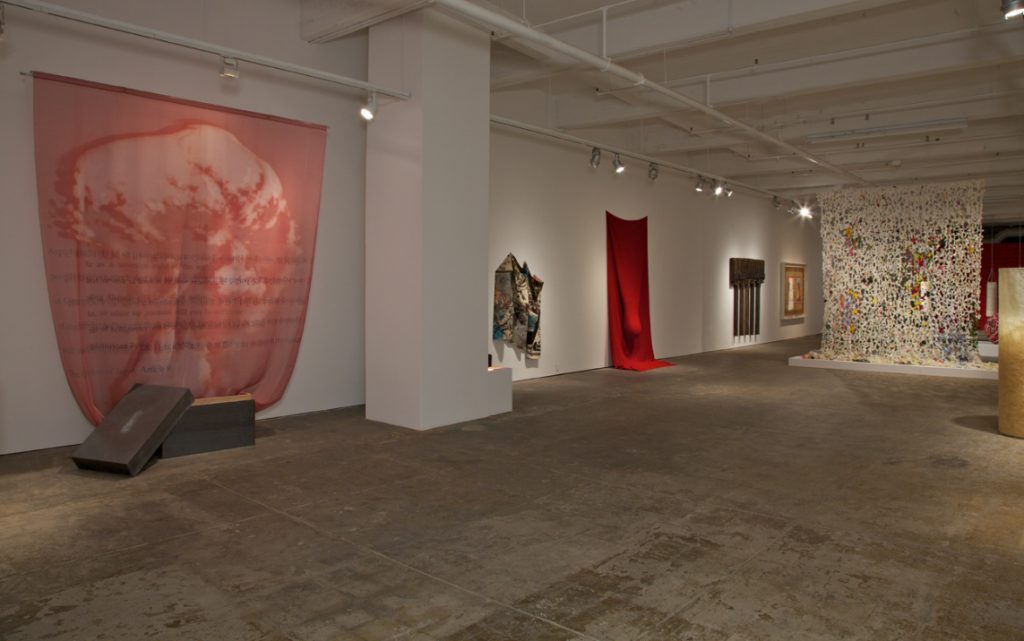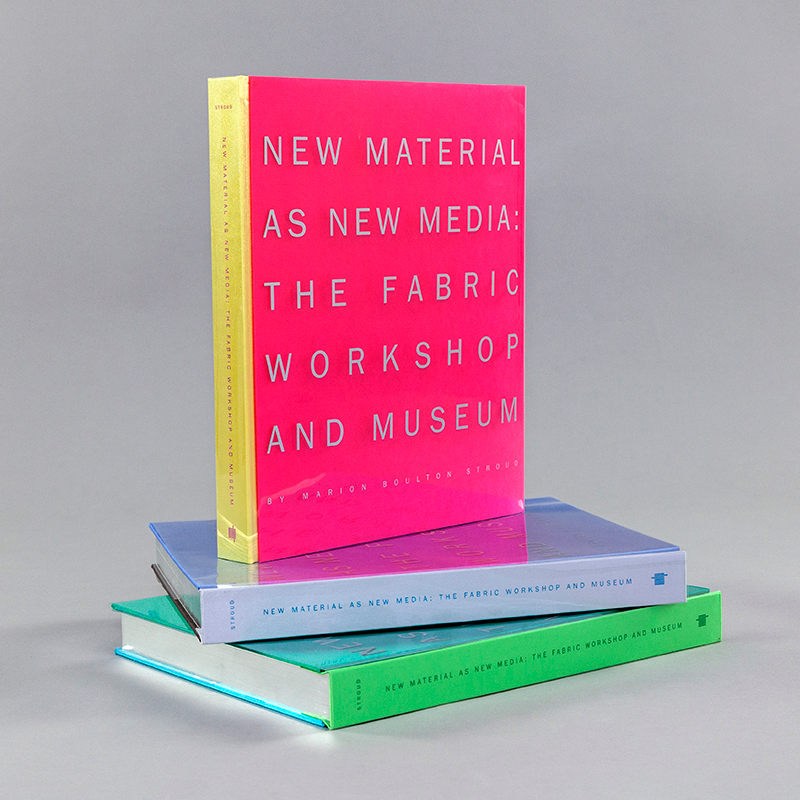L.A.P.D. Uniforms is an edition of thirty Los Angeles Police Department uniforms, fully equipped with a regulation belt, holster, baton, handcuffs, 92F Beretta handgun, and a copy of the official badge. After extensive research, the artist and FWM designed an enlarged prototype for the edition of wool uniforms, which were then custom-made by the company that manufactures the L.A.P.D.’s actual shirts and pants. Designed to fit a seven feet four-inch officer, the uniforms are installed with the outstretched sleeve of one uniform almost touching the next, as they circle the perimeter of the exhibition space. The viewer is engulfed by the physical presence of these symbols of authority and power.
Burden proposed this project soon after the Los Angeles riots of 1992, which were precipitated by the acquittal of Los Angeles police officers accused of unnecessarily beating Rodney King—an event captured on videotape and repeatedly played on news stations throughout the world. While L.A.P.D. Uniforms offers commentary on a specific event in recent American history, it also provides a vehicle for more general questioning about the nature of authority.
Chris Burden often exhibits L.A.P.D. Uniforms with another sculptural work, America’s Darker Moments, which he created in 1994 after his residency at FWM. This pentagonal vitrine encapsulates miniature, painted tin castings that look very much like toys. The five vignettes depict significant moments in American history, where violence played a significant role—the John F. Kennedy assassination, the killings of students at Kent State University by National Guardsmen, the My Lai Massacre in Vietnam, the bombing of Hiroshima, and the murder of Emmett Till at the start of the Civil Rights era.



